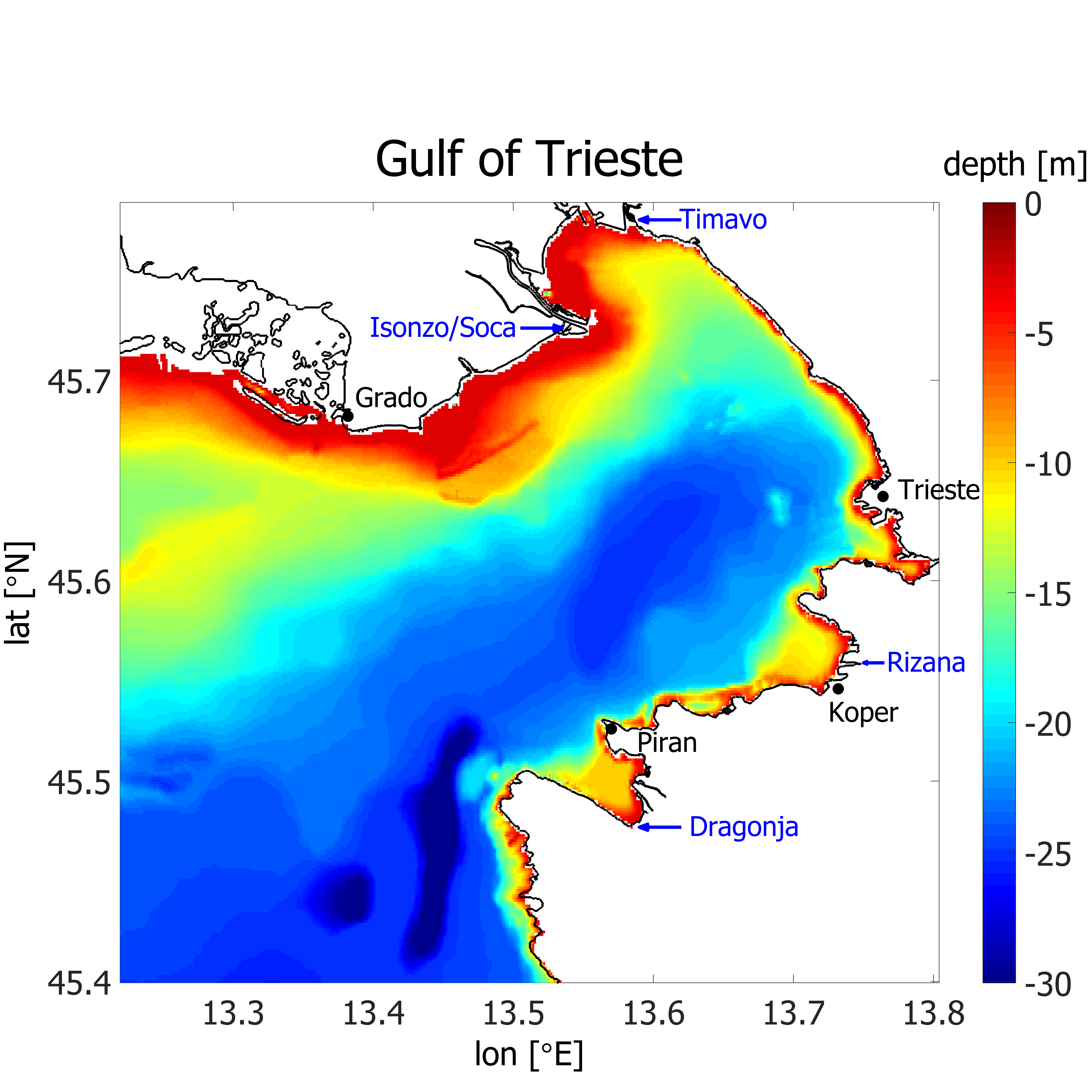72 hours forecast of biogeochemical sea water conditions
Last updated on
Gulf of Trieste short-term forecast of biogeochemical sea water conditions.
A new operational forecasting system, nested in the northern Adriatic model, has been released in December 2023. The latest version of the domain (figure below) for the Gulf of Trieste features a higher horizontal resolution (1/768°) compared to the previous version (1/320°). The new short-term forecasts are produced by the OGS ECHO research group by means of the coupled MITgcm-BFM modelling system. Data are generated using the E.U. Copernicus Marine Service Information dataset, through the 1/128° model of the northern Adriatic Sea, which provides the initial and boundary conditions for the Gulf of Trieste model. The forecasting system runs automatically at the CINECA supercomputing centre (Bologna, Italy).
72-hour forecasts are produced daily, after a 4-day hindcast, starting from northern Adriatic initial conditions. The model is forced by ALADIN meteorological data. Model domain has been discretized with a horizontal resolution of 1/768° (6 time higher than the northern Adriatic nesting model: 140 m × 100 m) and 37 unequally spaced vertical levels. The system considers the 4 major rivers flowing into the basin.
We acknowledge ARSO (Slovenian Environment Agency) for the meteorological data of the ALADIN model.
The forecasting system is in its preliminary configuration and it is still in the testing phase.
For any additional information regarding the model, please contact echo@ogs.it

